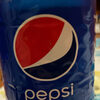E338 - Phosphoric acid
Functions: Antioxidant, Sequestrant
Phosphoric acid -also known as orthophosphoric acid or phosphoricV acid- is a weak acid with the chemical formula H3PO4. Orthophosphoric acid refers to phosphoric acid, which is the IUPAC name for this compound. The prefix ortho- is used to distinguish the acid from related phosphoric acids, called polyphosphoric acids. Orthophosphoric acid is a non-toxic acid, which, when pure, is a solid at room temperature and pressure. The conjugate base of phosphoric acid is the dihydrogen phosphate ion, H2PO−4, which in turn has a conjugate base of hydrogen phosphate, HPO2−4, which has a conjugate base of phosphate, PO3−4. Phosphates are essential for life.The most common source of phosphoric acid is an 85% aqueous solution; such solutions are colourless, odourless, and non-volatile. The 85% solution is a syrupy liquid, but still pourable. Although phosphoric acid does not meet the strict definition of a strong acid, the 85% solution is acidic enough to be corrosive. Because of the high percentage of phosphoric acid in this reagent, at least some of the orthophosphoric acid is condensed into polyphosphoric acids; for the sake of labeling and simplicity, the 85% represents H3PO4 as if it were all in the ortho form. Dilute aqueous solutions of phosphoric acid exist in the ortho form. - Wikipedia
EFSA evaluation: Re‐evaluation of phosphoric acid–phosphates – di‐, tri‐ and polyphosphates -E 338–341, E 343, E 450–452- as food additives and the safety of proposed extension of use (2019/06/12)
To evaluate your exposure to the E338 - Phosphoric acid food additive, you can browse our list of products that contain it. See the list of
| Infants | Toddlers | Children | Adolescents | Adults | Elderly | |
|---|---|---|---|---|---|---|
| < 1 | 1 to 2 | 3 to 9 | 10 to 17 | 18 to 64 | 65+ | |
| High risk (50% of people or more) |  |  |  | |||
| Moderate risk (5% of people or more) |  |  |  |  |
: Risk of reaching or exceeding the acceptable daily intake (ADI)
-
Coca-cola - 330 mL

-
Coca-Cola - 330 ml

-
Coca Cola Zero - 330 ml

-
Coca-Cola - 500 ml

-
Coca-Cola zero azúcar - 330ml

-
Coca-Cola 2l - 2 L

-
Coca Cola Zero 500ml - 500 ml

-
Coca-Cola - 1,25 L

-
Original taste - Coca-Cola - 1.75 L ℮

-
Coca-Cola Zero - 2l

-
Coca Cola Original taste - 1.5l

-
Coca-Cola Zero - 1 l

-
Coca-Cola - 1,25 l

-
Pepsi Max - PepsiCo - 1,5 L

-
Coca-Cola® Sans sucres - Coke ZÉRO® - 1,25 L e

-
Coca-Cola® - 1,75 L e

-
Coke Can 150ml - coca cola

-
Coca Cola Regular 2L - 2 l

-
Pepsi-Cola

-
Zero Sugar - Coca-Cola - 1.5l

-
Pepsi Cola - 2,5 L

-
Coca-Cola Cherry - 330 ml

-
Coca-Cola - 500 ml

-
Coca-Cola Classic - 1.25l

-
Coca - Cola Zero Sugar - 1,25 l

-
Coca-Cola Zero azúcar Zero cafeína - 330 ml

-
Coca Cola - 1,5 l

-
Coca-Cola Zéro sucres - 50 cl

-
Pepsi Cola - 1.25 l
-
Cola Zero - Coca-Cola - 150 ml

-
Coca-Cola Cherry - The Coca-Cola Company - 1.25 L

-
Coca Cola - 1,75 l

-
Coca-Cola original taste - 2 L

-
Pepsi Max - PepsiCo - 330 ml

-
Cola - Coca-Cola - 1l

-
CU GUST DE LAM - PepsiCola - 3

-
Coca-Cola Original - 0.5l

-
Coca-Cola - 250 ml

-
Pepsi 1,5L - 1500 ml

-
Coca cola zero sugar - 33cl

-
original taste - Coca-Cola - 250mL

-
Coca Cola Glass - coke - 330 ml

-
Coca sans sucres, calories et caféine - Coca-Cola - 330ml

-
Pepsi

-
Coca-Cola - 33 cl

-
Coca-Cola - Coca-Cola company - 330 ml

-
Coke Zero - Coca-Cola - 1l

-
Spezi - Paulaner - 0.5l

-
Coca Cola - 33 cl

-
Coca-Cola original taste - 250 ml

-
fitness - 23,5 gr

-
Diet coke - The Coca-Cola Company - 500 ml

-
Coca Cola Zero - 330 ml

-
Coca Cola - 500ml

-
Diet Coke - Coca-Cola - 330 ml

-
Zero Sugar (Null Zucker) - Coca Cola - 500ml

-
Coca-Cola Zero azúcar Zero cafeína - 2 l

-
Coca Cola - 2l

-
Pepsi - 1500ml

-
[Coca-Cola] Carbonated softdrink with cola taste - The Coca-Cola Company - 1.5 l
![[Coca-Cola] Carbonated softdrink with cola taste - Product](https://images.openfoodfacts.org/images/products/500/011/265/1324/front_en.32.100.jpg)
-
Coca-Cola - 0.33l

-
Cola - Breizh Cola - 1,5 L

-
Pepsi max - 2L

-
Bebida de Almendras - Milbona - 1 l

-
Coca-Cola - 330 ml
-
Pepsi Zéro Sleek 33 cl - Pepsico - 330 ml

-
Pepsi max - 330ml

-
Coca Cola zéro - 33 cl

-
Cherry - Coca-Cola - 500 ml

-
Coca-Cola - 1500ml

-
Coca-Cola - 330 ml

-
Coca-Cola - 1.35 L

-
Coca-Cola Plastic - 300ml

-
Coca-Cola by Coke - 12 fl oz (355 ml)

-
Coca cola zero cherry - 1,25 L

-
Double Max Cocoa & Vanilla Croissant - 7 Days

-
Coca-Cola Zero - 1,5 l

-
Fritz-Kola - 330 ml

-
Coca-Cola Zero Sugar - 330 ml

-
Coca zéro sans caféine - Coca-Cola - 500 ml.

-
Freeway Cola - 2 litres

-
Cola - Freeway - 33 cl

-
Pepsi max - Pepsico - 2l

-
Pepsi - 1,5L

-
Coca Cola - 0.33l

-
Coca cola zero - 450 ml

-
Spezi - Paulaner - 330ml

-
Coca Cola Zero Cherry Can 330ml - 330 ml

-
Coca Cola Zero - 355 ml

-
Pepsi - PEPSICO - 33 cl

-
Jean's Pure sensation cola zéro - 1,5 l

-
Pepsi - 500 ml

-
Pepsi Max - Sodastream - 440ml

-
Mini coca cola zero sucres - 8 x 15 cl

-
Coca cola vanille - 330ml

-
Coca-Cola Less Sugar - 2,25 l

-
Coca-Cola goût original - coke - 50cl

-
Coca-Cola Light - 330 ml

-
Coca-Cola - 200 ml

-
Кроасан с крем брюле - 7 Days - 92 г

